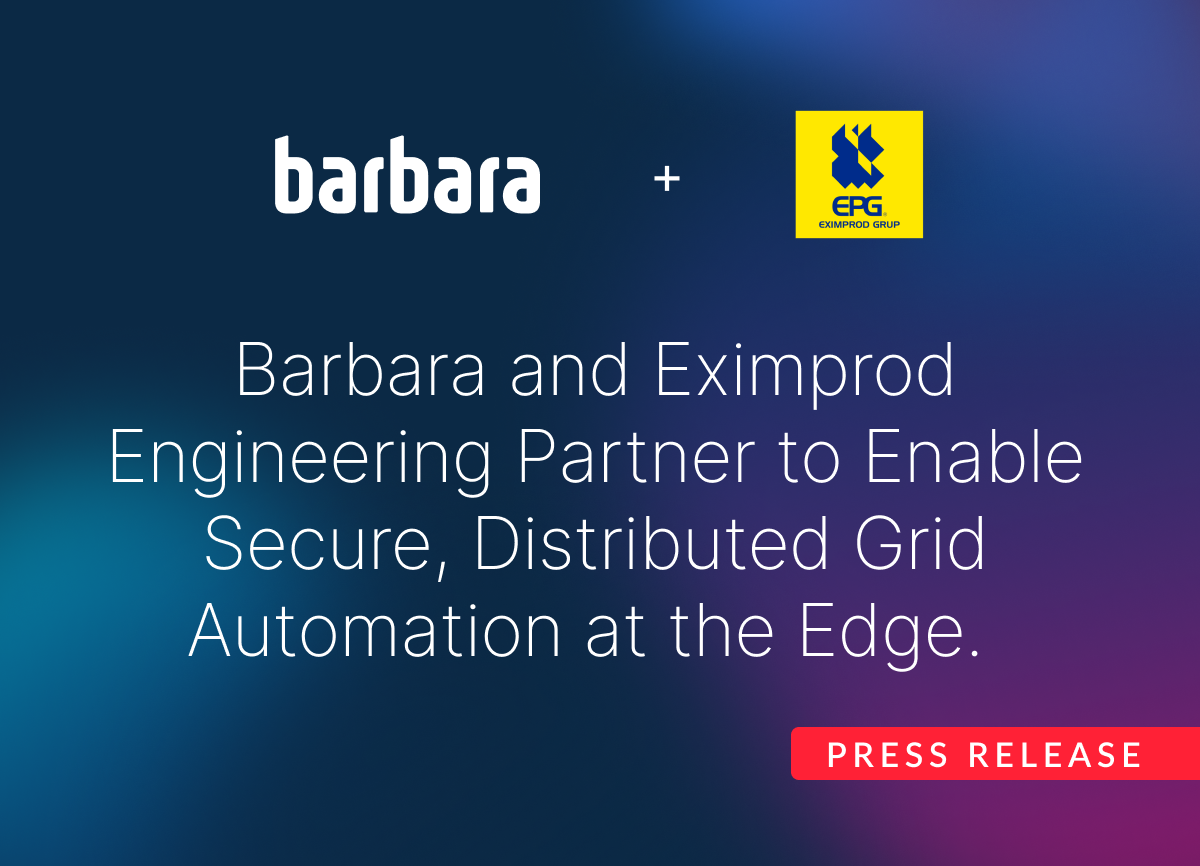Managing industrial IoT devices: the definitive guide to remote and centralised device management
Industrial IoT devices enable companies to access valuable benefits, from automating industrial processes to optimizing resources or opening up new business opportunities. However, these benefits are only effectively accessible through efficient, remote and integrated device management.
We analyze the convenience of managing industrial IoT devices remotely and in an integrated way, and the keys to do it thanks to an IoT platform.
Integrated remote device management: what is it?
Remote and integrated device management consists of having a tool or tools to monitor the IoT devices and nodes in a company and execute actions on them, regardless of their location.
Traditionally, the management of industrial devices was done "locally": control was carried out through control software programs (called SCADA) installed in the same industrial plants as the equipment to be managed. However, this method has its limitations and requires companies to have equipment on site.
The emergence of IoT has meant that SCADA and IoT must cohabit industrial spaces. In this context, it becomes even more essential to create efficient ecosystems where managing devices does not lead to efficiency losses.
Device management, in short, is concerned with the control of IoT nodes, either because the data these devices provide is valuable or because the business needs to act on it. There are at least 4 key processes that remote and integrated management facilitates across the entire device lifecycle:
- Setup of new devices.
- Monitoring: companies obtain real-time information on the status of their IoT nodes to ensure that they are functioning properly. In case of anomalous behaviour, they receive alarms to correct the situation.
- Device updates: fundamental from a cybersecurity point of view in Industrial IoT environments, since outdated IoT nodes are a vulnerable point in any system. (Through integrated and remote device management and thanks to the appropriate IoT platform, it is possible to generate OTA (Over the Air) updates of firmware, software and device applications, including enhanced functionalities and security patches).
- Changing configurations: An IoT platform for managing devices takes care of remotely readjusting the configuration of IoT nodes or their applications. Thus, it is possible to adapt the behaviour of the devices, having the capacity to evolve the use cases and bringing scalability to the project.
As an example, a company applying IoT in the energy sector may initially be interested in capturing data on the energy produced by its solar panels and sending that data to a server in the cloud. Later, however, it may prefer to send only data that exceeds a threshold and send alarms when it does. Integrated, remote management of Industrial IoT nodes facilitates this process.
This video explains that by using Barbara's dashboard you will be able to securely and easily manage the entire lifecycle of the device. This allows the operational costs of deployment, maintenance and removal to be significantly reduced.
Benefits of remote and integrated industrial IoT device management
Convenience
By implementing remote device management, companies are not forced to have human teams on site or manage travel to production sites. This is especially advantageous for distant, large or complex to access locations, such as solar or wind farms equipped with IoT devices.
This convenience translates, in turn, into improvements in efficiency and uptime, thereby significantly reducing the economic cost of these operations.
2. Real-time monitoring
Comprehensive, remote device management makes it easy to check the performance of each IoT node, verifying that all are performing their functions on an ongoing basis.
In the industrial environment, it is indispensable for the implementation of predictive maintenance. It is also essential in the industrial environment to implement predictive maintenance processes, which are estimated to save between 30 and 40% in maintenance costs, according to OnUpKeep.
In addition, for the energy industry, monitoring enables consumption and production to be adjusted and networks to be restored quickly in the event of outages.
You may be interested in: How to automate processes through IoT and telemetry in the energy sector
3. Possibility of testing
Maximising efficiency in IoT environments involves adopting strategies that allow for the testing of new configurations or solutions.
Therefore, the right IoT platform for device management enables field testing and metricsto help make informed decisions aimed at saving money or maximising resources.
4. Ease of use
Using the right IoT platform, remote and integrated access to devices facilitates the management of complex environments through easy-to-use applications. In other words, businesses can access data about their IoT nodes and their performance without the need for complex technical expertise.
Ultimately, integrated and remote device management results in the optimisation of the manufacturing or production process. It increases the speed at which products reach the market at more economically favourable conditions for companies and creates a more satisfying and seamless consumer experience .
Keys to remote and integrated device management
Industrial automation companies targeting IoT deployments offer platforms for remote and integrated device management. These platforms must:
- Facilitate the support of the IoT solution provider.
- To have trained managers to carry out this management.
- Providing secure solutions by design, in an environment particularly vulnerable to cybersecurity issues such as Industrial IoT.
- Be user-friendly tools, designed for non-technical personnel. In addition, industrial automation companies should provide the necessary training for the use of their platform, encouraging autonomy as far as possible.
Barbara IoT is IoT software that connects industrial equipment and enables cyber-secure computing in IoT and Edge environments.
Barbara OS enables remote and integrated device management, ensuring that all IoT deployments can be updated, monitored and controlled throughout their entire lifecycle.
Request a demo to see first-hand all the benefits of the Barbara platform in your IoT deployment.



.png)





